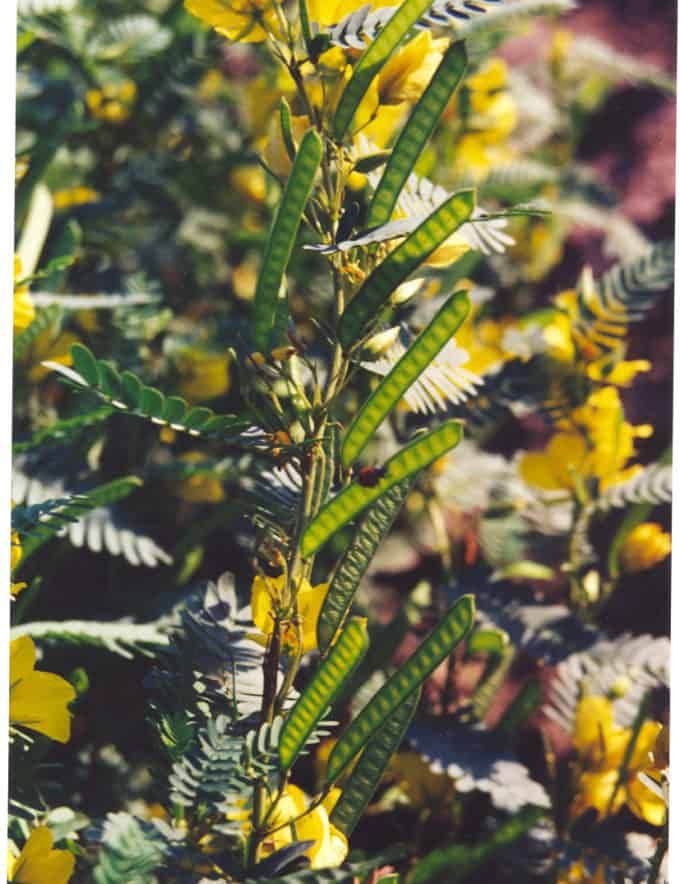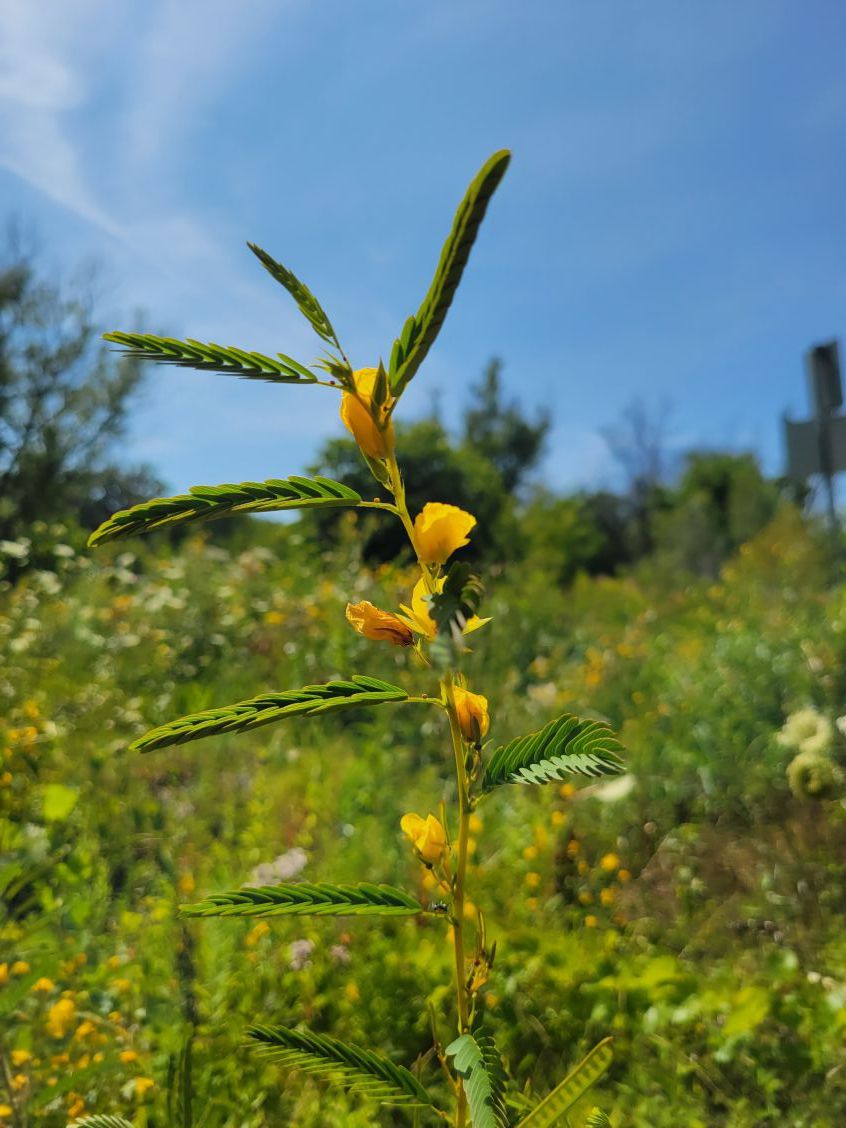Plant of the Week: Partridge Pea
posted
Written by: Engineering Conservation Crew
Take a peek at our Plant of The Week: Partridge pea (Chamaecrista fasciculata)! Pardon all the “P”s, but Partridge pea is our newest perennial pick.This annual legume (bean family) possesses bright yellow flowers and symmetrical feather like leaves. Hanging from this species, the fruit is a flat green pod that closely resembles a vegetable you may have in your garden. These pods will slowly brown until they are mature, eventually falling into the soil to become their own individual plant. These seed pods are excellent food for game birds and songbirds that spend the winter with us.
Occasionally, these pea pods are even eaten by small birds and can be carried to new areas.Long-tongued bees are responsible for pollination of the flowers, which includes such visitors as honeybees, bumblebees, long-horned bees, and leaf-cutting bees. Two species of bees, Walsh’s digger bee (Anthophora walshii) and the black-legged long-horned bee (Svastra atripes), are oligoleges of partridge pea. This means, these bees are specialized to visit a limited variety of plants, often a single genus or species. As a result, partridge pea is necessary for these specific species to flourish.Sometimes Partridge Pea is deliberately planted to stabilize erosion on banks due to its density and quick growth. It prospers around ditches and other open areas, from where it frequently escapes.
This plant favors disturbed or bare areas that grant them full sun exposure. Partridge pea is also planted for its nitrogen fixing properties. In order to undergo nitrogen fixation in legumes a partnership between the plant and a bacterium is necessary. This partnership converts N2, which cannot be absorbed by plants or animals, into the ammonia (NH3) form of nitrogen.
Each week during the growing season, the Engineering Division focuses in on a Plant of the Week to raise awareness of different plants in the field that benefit our environment. The Engineering crews in the field tasked with conservation share expert insight on these plants and their benefits each week in a creative way!


